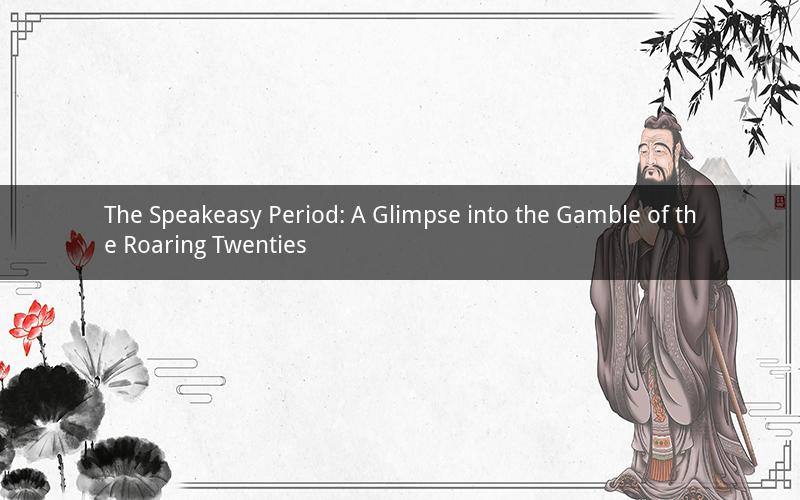
Introduction:
The 1920s, often referred to as the "Roaring Twenties," was a time of unprecedented economic growth, social change, and moral decadence. Amidst the backdrop of Prohibition, the speakeasy period emerged as a refuge for those seeking escapism and indulgence. This article delves into the fascinating world of the speakeasy, exploring its significance, the risks involved, and the gambling culture that thrived during this era.
1. The Rise of the Speakeasy:
The Prohibition era, which lasted from 1920 to 1933, was a time when the sale and consumption of alcohol were banned in the United States. However, this did not deter the nation's thirst for liquor. Instead, it gave rise to a thriving underground scene known as the speakeasy. These establishments were secret drinking dens that catered to those who sought an escape from the restrictions imposed by the government.
2. The Significance of the Speakeasy:
The speakeasy period played a crucial role in shaping the cultural landscape of the 1920s. These establishments became hubs of social activity, attracting celebrities, artists, and politicians. They provided a sense of freedom and rebellion, allowing people to indulge in alcohol and other forms of entertainment without fear of repercussions. The speakeasy period also gave rise to the flapper culture, characterized by its loose morals, fashionable attire, and a newfound sense of independence among women.
3. The Gamble of the Speakeasy:
While the speakeasy offered a haven for alcohol enthusiasts, it also presented a significant risk. The illegal nature of these establishments made them vulnerable to police raids and violence. However, this did not deter the patrons, who were willing to take the gamble for the thrill and excitement that the speakeasy offered.
4. The Role of Gambling in the Speakeasy:
Gambling was an integral part of the speakeasy culture. These establishments often featured games of chance, such as poker, blackjack, and roulette, which were played in secret or discreetly. The allure of gambling added an extra layer of excitement to the speakeasy experience, as patrons could win big or lose everything in a matter of minutes.
5. The Impact of the Speakeasy Period:
The speakeasy period had a profound impact on American society. It contributed to the rise of organized crime, as bootleggers and gangsters became the primary suppliers of alcohol. The culture of the speakeasy also influenced literature, music, and film, with authors and filmmakers exploring the themes of prohibition, crime, and the pursuit of pleasure.
6. The End of the Speakeasy Period:
The Prohibition era came to an end in 1933 with the ratification of the Twenty-First Amendment, which repealed the Eighteenth Amendment. The end of Prohibition marked the end of the speakeasy period, as legal taverns and bars replaced the underground drinking dens. However, the legacy of the speakeasy continues to be celebrated through historical accounts, films, and cultural references.
Questions and Answers:
1. What was the main reason for the establishment of speakeasies during the Prohibition era?
Answer: The main reason for the establishment of speakeasies was to provide a place for people to drink alcohol in secret, as the sale and consumption of alcohol were illegal during the Prohibition era.
2. How did the speakeasy period impact American society?
Answer: The speakeasy period had a profound impact on American society by contributing to the rise of organized crime, influencing literature and film, and promoting a culture of rebellion and escapism.
3. What types of gambling were commonly found in speakeasies?
Answer: Speakeasies commonly featured games of chance such as poker, blackjack, and roulette, which were played in secret or discreetly to avoid detection by authorities.
4. How did the end of Prohibition affect the speakeasy culture?
Answer: The end of Prohibition led to the closure of speakeasies and the rise of legal taverns and bars. However, the legacy of the speakeasy period continued to be celebrated through historical accounts, films, and cultural references.
5. Why were people willing to take the risk of visiting a speakeasy during the Prohibition era?
Answer: People were willing to take the risk of visiting a speakeasy during the Prohibition era because they sought an escape from the restrictions imposed by the government and desired the thrill and excitement that these secret drinking dens offered.